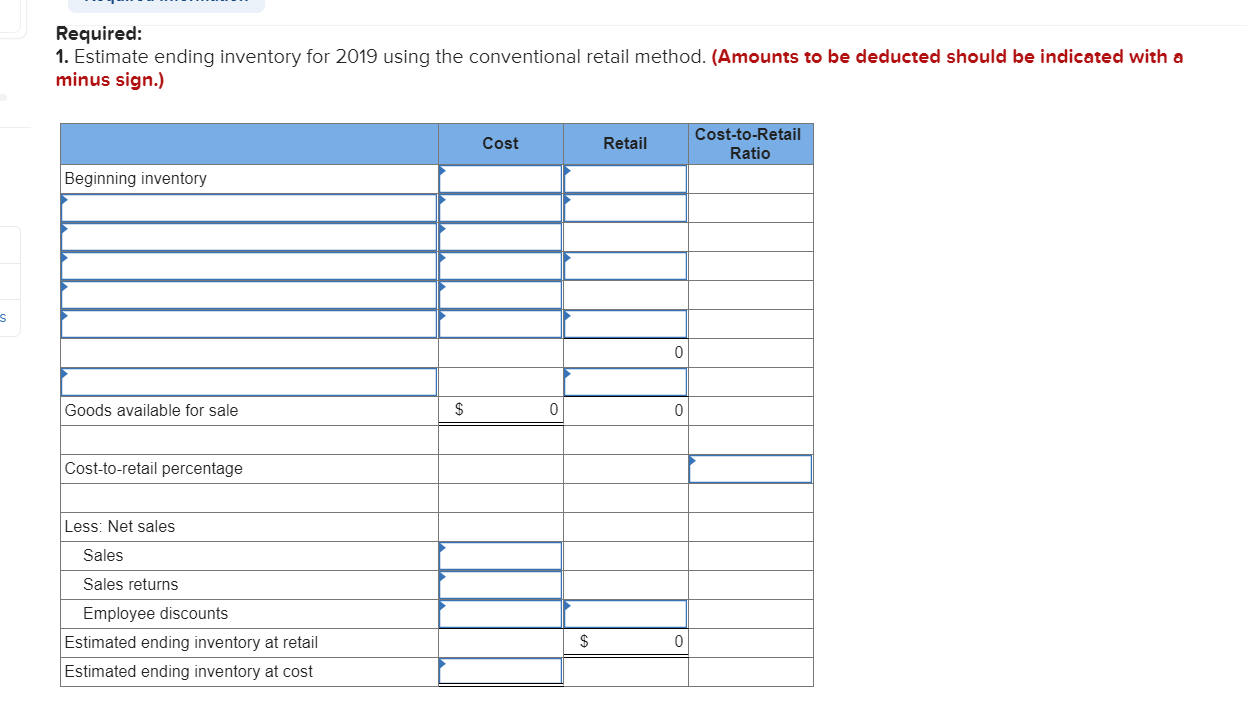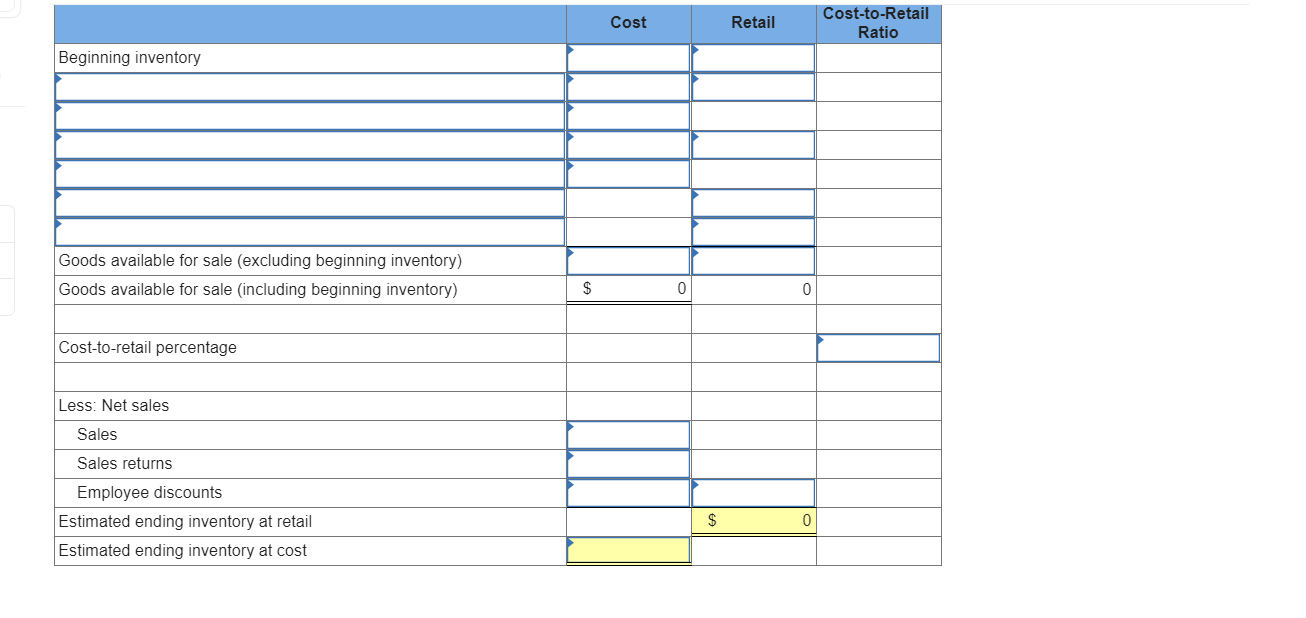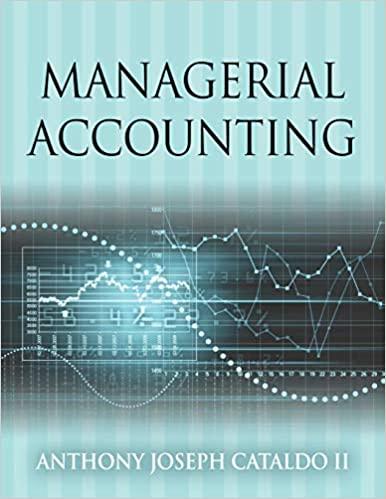Answered step by step
Verified Expert Solution
Question
1 Approved Answer
Problem 9-12 (Algo) Retail inventory method; various applications [LO9-3, 9-4, 9-5] [The following information applies to the questions displayed below.] Raleigh Department Store uses the
Problem 9-12 (Algo) Retail inventory method; various applications [LO9-3, 9-4, 9-5]
[The following information applies to the questions displayed below.] Raleigh Department Store uses the conventional retail method for the year ended December 31, 2019. Available information follows:
- The inventory at January 1, 2019, had a retail value of $37,000 and a cost of $30,090 based on the conventional retail method.
- Transactions during 2019 were as follows:
| Cost | Retail | |||||
| Gross purchases | $ | 177,030 | $ | 410,000 | ||
| Purchase returns | 5,700 | 28,000 | ||||
| Purchase discounts | 4,200 | |||||
| Gross sales | 345,000 | |||||
| Sales returns | 5,500 | |||||
| Employee discounts | 3,000 | |||||
| Freight-in | 29,500 | |||||
| Net markups | 17,000 | |||||
| Net markdowns | 28,000 | |||||
Sales to employees are recorded net of discounts.
- The retail value of the December 31, 2020, inventory was $68,850, the cost-to-retail percentage for 2020 under the LIFO retail method was 70%, and the appropriate price index was 102% of the January 1, 2020, price level.
- The retail value of the December 31, 2021, inventory was $40,950, the cost-to-retail percentage for 2021 under the LIFO retail method was 69%, and the appropriate price index was 105% of the January 1, 2020, price level.

Required: 2. Estimate ending inventory for 2019 assuming Raleigh Department Store used the LIFO retail method. (Amounts to be deducted should be indicated with a minus sign.)

Step by Step Solution
There are 3 Steps involved in it
Step: 1

Get Instant Access to Expert-Tailored Solutions
See step-by-step solutions with expert insights and AI powered tools for academic success
Step: 2

Step: 3

Ace Your Homework with AI
Get the answers you need in no time with our AI-driven, step-by-step assistance
Get Started


